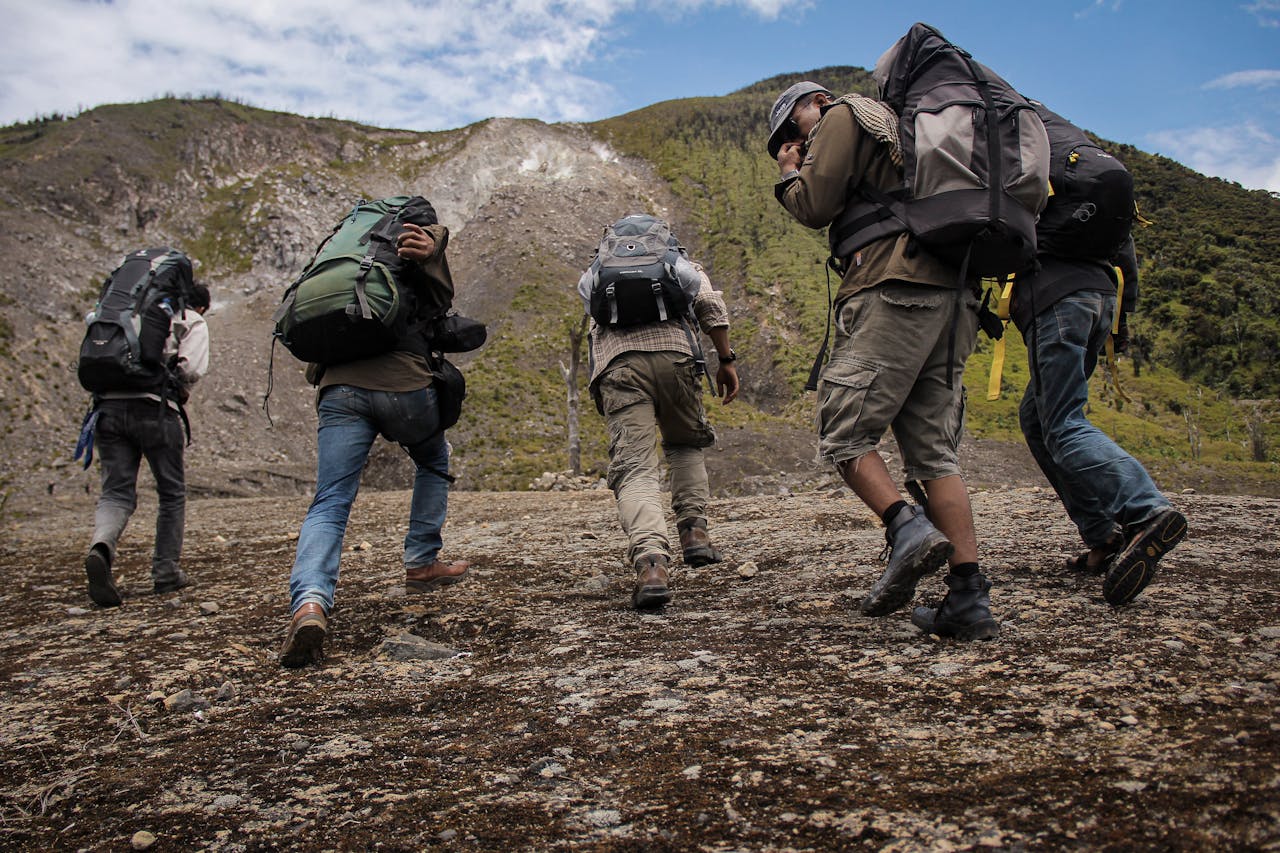In the world of outdoor exploration, where every journey is a story and every adventure a milestone, creating patches that capture the spirit of these experiences is more than just a creative endeavor—it’s a way to inspire, commemorate, and connect. Whether for hiking clubs, adventure camps, scouting groups, or outdoor enthusiasts, patches serve as symbols of achievement, badges of honor, and reminders of the great outdoors’ endless possibilities.
Patches have a long history in outdoor culture, from the badges earned by scouts to the emblems worn by mountaineers and explorers. These patches are not just decorative; they are imbued with meaning, representing the challenges faced, the skills acquired, and the bonds formed in the wilderness. In this article, we explore the art and craft of creating patches that inspire outdoor exploration, offering insights into design, materials, and their role in motivating and commemorating the adventures that await.
The Importance of Patches in Outdoor Exploration
Before delving into the specifics of creating patches, it’s essential to understand why they hold such significance in the world of outdoor exploration. Patches are more than just fabric and thread—they are symbols of personal growth, community, and the enduring spirit of adventure.
1. Commemorating Achievements
One of the most important roles of patches in outdoor exploration is to commemorate achievements. Whether it’s summiting a mountain, completing a long-distance trail, or mastering a new outdoor skill, patches serve as tangible reminders of these accomplishments. They provide adventurers with a way to document their journey, marking each milestone with a symbol that can be proudly displayed.
Practical Example:
A hiking club might award patches to members who complete specific trails, such as the Appalachian Trail or the Pacific Crest Trail. Each patch could feature an image of the trail’s most iconic landmark, along with the trail’s name and the year completed. These patches not only celebrate the hiker’s achievement but also inspire others to take on the challenge.
2. Building Community and Camaraderie
Patches also play a crucial role in building community among outdoor enthusiasts. When adventurers wear patches that represent shared experiences or group affiliations, they create a sense of camaraderie and belonging. These patches become visual symbols of membership in a community that values exploration, resilience, and a love for the outdoors.
Practical Example:
A scouting group might design a patch for members who participate in a specific camping trip or outdoor activity. The patch could feature the group’s logo and an image representing the activity, such as a tent or campfire. Wearing this patch would not only commemorate the trip but also strengthen the bond among group members.
3. Inspiring Future Adventures
Patches have the power to inspire future adventures by serving as reminders of past experiences and the possibilities that lie ahead. When adventurers see the patches they’ve earned, they are reminded of the challenges they’ve overcome and motivated to continue exploring new places and pushing their limits.
Practical Example:
A mountaineering club might create a series of patches representing different peaks in a mountain range. As members complete each climb, they earn the corresponding patch. This collection of patches not only documents their achievements but also encourages them to tackle the remaining peaks.
4. Promoting Environmental Stewardship
In the context of outdoor exploration, patches can also be used to promote environmental stewardship. By creating patches that celebrate conservation efforts, clean-up initiatives, or sustainable practices, organizations can raise awareness and encourage responsible behavior in the wilderness.
Practical Example:
An environmental organization might design a patch for volunteers who participate in trail clean-up events. The patch could feature an image of a hiker picking up litter, along with a slogan like “Leave No Trace.” This patch would recognize the volunteer’s contribution to preserving natural spaces and encourage others to follow suit.
Designing Patches That Inspire Outdoor Exploration
Creating patches that resonate with outdoor enthusiasts requires a blend of creativity, symbolism, and practical considerations. The design process should reflect the spirit of adventure while also being functional and appealing to those who will wear the patches. Below are key elements to consider when designing patches that inspire outdoor exploration.
1. Understanding the Target Audience
The first step in designing inspiring patches is understanding the target audience. Outdoor enthusiasts come from diverse backgrounds and have different interests, so it’s important to create designs that resonate with their specific passions and experiences.
Tips for Understanding the Audience:
- Consider the Activity: Tailor the patch design to the specific outdoor activity, whether it’s hiking, climbing, camping, or kayaking. The imagery and symbols used should reflect the unique aspects of that activity.
- Reflect the Audience’s Values: Outdoor enthusiasts often value qualities like resilience, exploration, and environmental stewardship. The patch design should capture these values in a way that resonates with the audience.
- Engage the Community: Consider involving the community in the design process by seeking input or running a design contest. This can ensure that the patches reflect the interests and preferences of those who will wear them.
Practical Example:
A patch designed for a rock climbing club might feature an image of a climber scaling a cliff, with the words “Reach New Heights” incorporated into the design. This patch would appeal to climbers who value pushing their limits and conquering challenging routes.
2. Choosing Symbols and Imagery
Symbols and imagery are central to the design of inspiring patches. These elements should be carefully chosen to represent the values, challenges, and experiences associated with outdoor exploration.
Tips for Choosing Symbols:
- Use Recognizable Outdoor Icons: Incorporate symbols that are universally associated with the outdoors, such as mountains, trees, rivers, or wildlife. These icons are easily recognizable and immediately convey the theme of exploration.
- Reflect the Specific Environment: If the patch is designed for a specific location or environment, use imagery that reflects the unique characteristics of that place. For example, a patch for a desert hike might feature a cactus or sand dunes, while a patch for a forest trail might include pine trees or a waterfall.
- Incorporate Personal or Group Symbols: Consider including personal symbols, such as a favorite piece of gear, or group symbols, like a club logo or motto, to make the patch more meaningful to the wearer.
Practical Example:
A patch designed for a kayaking expedition might feature a stylized wave with a kayak cutting through it. The design could also include the name of the river or lake where the expedition took place, adding a personal touch to the patch.
3. Incorporating Color and Contrast
Color is a powerful tool in patch design, capable of evoking emotions, highlighting important elements, and making the patch visually appealing. The color scheme should be carefully chosen to align with the theme of outdoor exploration and the specific environment represented.
Tips for Using Color:
- Reflect Natural Landscapes: Use colors that are commonly found in natural landscapes, such as earth tones, greens, blues, and sunset hues. These colors create a connection to the outdoors and make the patch feel more authentic.
- Create Contrast for Visibility: Ensure there is sufficient contrast between the different elements of the patch, such as the background and the symbols, to make the design clear and easy to read. High contrast can also make the patch stand out more when worn on gear or clothing.
- Consider Seasonal Colors: If the patch is designed for a specific season, consider using colors that reflect that time of year, such as warm tones for autumn or cool blues for winter.
Practical Example:
A patch for a winter camping trip might use a color palette of deep blues and whites, with a snow-covered pine tree as the central image. The contrast between the dark background and the bright white snow would make the patch visually striking and evocative of the winter landscape.
4. Balancing Simplicity and Detail
While it’s important to include meaningful symbols and elements in the patch design, it’s also crucial to strike a balance between simplicity and detail. The patch should be visually appealing and easy to understand at a glance, while also offering enough detail to convey the theme of the adventure.
Tips for Balancing Design:
- Focus on Key Elements: Identify the most important elements of the design, such as a central symbol or motto, and make them the focal point of the patch. Avoid overcrowding the design with too many details.
- Use Negative Space: Incorporate negative space into the design to create balance and prevent the patch from looking too cluttered. Negative space can also help draw attention to the most important elements of the design.
- Test the Design: Before finalizing the patch, test it in different sizes and on different backgrounds to ensure it remains clear and effective in various contexts.
Practical Example:
A patch designed for a multi-day hiking trip might feature a simple silhouette of a hiker with a backpack, standing on a ridge against a sunset. The design could include the name of the trail and the year, with minimal additional detail to keep the focus on the hiker and the landscape.
5. Adding Text and Messaging
Text can be an important element of patch design, providing additional context or reinforcing the theme of the adventure. Whether it’s the name of the group, the location of the expedition, or a motivational slogan, text should be used thoughtfully to complement the overall design.
Tips for Using Text:
- Choose the Right Font: Select a font that reflects the theme of the patch. For example, a rugged, bold font might be appropriate for a wilderness survival patch, while a more elegant script could be used for a nature appreciation group.
- Keep It Concise: Avoid using too much text, as it can overcrowd the design and make the patch difficult to read. Focus on key words or phrases that are essential to the theme of the patch.
- Consider Placement: Place text strategically within the design to ensure it enhances, rather than detracts from, the visual elements. Text can be integrated into banners, curved around the edge of the patch, or placed centrally depending on the design.
Practical Example:
A patch for a summer camp might feature the camp’s name arched above an image of a campfire, with the words “Adventure Awaits” in a banner below. The text would be concise and clearly readable, reinforcing the theme of outdoor exploration and the camp experience.
6. Personalization and Customization
Offering personalization and customization options can make patches even more meaningful to outdoor enthusiasts. Personalized patches can commemorate individual achievements, specific roles, or personal contributions to an adventure.
Tips for Personalization:
- Include Names or Initials: Allow adventurers to add their names or initials to the patch, making it uniquely theirs. This can be particularly meaningful for commemorative patches or group achievements.
- Highlight Specific Achievements: Consider adding specific achievements or milestones to the patch, such as “Summit Success,” “Trailblazer,” or “Expedition Leader.” This adds a personal touch and recognizes the individual’s contribution.
- Offer Custom Color Options: Provide options for adventurers to choose custom color schemes that reflect their personal style while still aligning with the overall theme of the patch.
Practical Example:
A mountaineering club might offer personalized summit patches, featuring the name of the mountain, the climber’s name, and the date of the ascent. These patches would serve as unique mementos of the climber’s achievement and encourage others to take on similar challenges.
Using Patches to Motivate and Engage Outdoor Enthusiasts
Patches are not only symbols of past achievements but also powerful tools for motivating and engaging outdoor enthusiasts in future adventures. By incorporating patches into various aspects of outdoor culture, organizations and groups can create a more dynamic and inspiring experience for their members.
1. Incorporating Patches into Challenges and Competitions
One effective way to use patches is to incorporate them into outdoor challenges and competitions. Patches can serve as rewards for completing specific tasks, reaching milestones, or participating in group activities, motivating members to engage more actively.
Practical Example:
A wilderness survival course might offer patches for completing different levels of the program, such as “Basic Survival,” “Advanced Techniques,” and “Master Survivalist.” Each patch could feature symbols representing the skills learned at that level, such as a compass, fire starter, or shelter.
2. Patches as Membership Rewards
Outdoor organizations can use patches as membership rewards or incentives. Offering a unique patch to new members, or creating special patches for long-time members, can help build loyalty and create a sense of belonging.
Practical Example:
A national park association might offer a patch to members who visit a certain number of parks within a year. The patch could feature the association’s logo and an image of a park ranger, symbolizing the member’s commitment to exploring and preserving natural spaces.
3. Organizing Patch Trading Events and Meetups
Patch trading events and meetups provide a social opportunity for outdoor enthusiasts to connect, share stories, and trade patches. These events can be organized around specific activities, such as hiking festivals or outdoor expos, or as standalone gatherings for the community.
Practical Example:
At an annual outdoor festival, organizers could set up a designated area for patch trading, where attendees can bring their patches to swap with others. This not only fosters a sense of community but also encourages attendees to collect patches from different events and locations.
4. Creating Limited-Edition Patches for Special Events
Limited-edition patches can be used to commemorate special events, such as anniversary celebrations, milestone achievements, or significant initiatives. These patches can add excitement and exclusivity to the event, making them highly sought after by participants.
Practical Example:
An adventure camp might create a limited-edition patch to celebrate its 50th anniversary. The patch could feature the camp’s logo and the number “50” prominently displayed, along with a symbol that represents the camp’s history, such as a canoe or campfire.
5. Encouraging Social Media Sharing with Patches
Encouraging outdoor enthusiasts to share photos of their patches on social media can help promote events, challenges, and organizations. By creating a specific hashtag or running a social media contest, organizers can generate buzz and engage with a wider audience.
Practical Example:
A hiking group could encourage members to post pictures of their trail patches on Instagram with a specific hashtag, such as #TrailPatchChallenge. The best photos could be featured on the group’s social media channels, with the winner receiving a prize or an exclusive patch.
6. Integrating Patches into Outdoor Gear
Beyond being standalone items, patches can be integrated into a broader range of outdoor gear, such as jackets, backpacks, or hats. This not only increases the visibility of the patch but also enhances its value as a practical and functional item.
Practical Example:
An outdoor clothing brand might offer jackets with a custom patch already sewn on, featuring the brand’s logo and an image of a mountain peak. Customers could also have the option to add additional patches to commemorate their adventures, creating a personalized piece of gear.
The Enduring Power of Patches in Outdoor Exploration
Patches are more than just decorative items—they are powerful symbols that capture the spirit of outdoor exploration, inspire future adventures, and build a sense of community among outdoor enthusiasts. By thoughtfully designing and incorporating patches into various aspects of outdoor culture, organizations and groups can create lasting connections, motivate their members, and celebrate the beauty and challenges of the great outdoors.
Whether used to commemorate achievements, promote environmental stewardship, or foster a sense of belonging, patches play a crucial role in the lives of those who love to explore. For anyone dedicated to the outdoors, investing in well-designed patches can have a profound and enduring impact on the adventure experience.
If you are interested in ordering some high-quality custom patches, feel free to call us at 877-912-6407 or fill out a FREE quote here.




